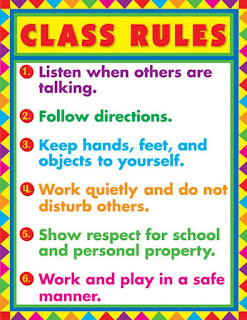Creating High Performance Learning Environments
Roller coaster physics (STEM) (Teaching Channel, 2017)
From watching this video we can see a teacher who has mastered the idea of good quality engagement. She has high academic and behavior expectations and has established norms and procedures that help lead to high student performance. In her class everyone (teacher included) is expected to participate and the teacher asserts that her students get smarter from communicating and working with each other. The video showed good quality of interactions and good affective tone (Marzano, 2007). The teacher gave prompt feedback, lots of equal interactions and was in close proximity to students (ie. sits on ground with them). She also had a good affective tone too (i,.e many warm smiles). I could see immediately that the teacher was using the strategy “I do” (direct instruction), “we do” (chimer activity), “you do together” (group sketch, computer game and design challenge), “you do alone” (individual sketch with labels). By involving all students (i.e. giving them jobs to do in each group) she is showing them that she thinks they all are capable of accomplishing the task. The teacher continues to show that she holds high performance expectations for her students by highlighting that mistakes are ok and that is how they learn. She incorporates Lemov (2010) strategy of ‘right is right” when she uses technical vocabulary and sticks with the students until they get the answer 100% right.
This teacher also incorporates high behavior expectations. She discussed how her students have to treat each other with respect (listen to others ideas and defend their ideas). In the chimer activity the students learn the value of each other's learning, to honor each other and that through interaction they are the truly problem solving.
Her class routines and norms help to create this high performance environment. The students work well in groups due to her assigning jobs for them and helping them to fully understand what is required. She gives students opportunities to be successful by incorporating their learning styles when assigning jobs (recorder, organizer, accountant etc). One of their class norms is probably that they are dedicated to being “life-long problem solvers” together.
3rd Grade Chinese Math (Chen, 2007 & The Conversation, 2014)
When combining the video “3rd Grade Chinese Math” and “The Conversation” article one is able to see a different type of class expectations in academics, behavior and norms and procedures. This system of teaching math relies on class engagement instead of individual/small engagement. The teacher in the video seemed to have well thought out norms and procedures so that the group instruction and interaction went smoothly and thus attempted at high performance. She did exhibit high behavioral expectations. The students seemed to respect each other and were able to listen to each other. Students knew the class norms and this set up high behavior expectations. The students knew when to repeat phrases, when to raise their hand, to wait to be called on and to participate when called on. However, I did not see high academic expectations from everyone. Only the kids in the front of the room were called on and the kids sitting in the back were obviously not engaged (they were not speaking in tandem with the class and thus not following the norms of the class).
The article (The Conversation, 2014) stated that Chinese math curriculum lends itself to high academic expectations because everyone is expected to participate and succeed. The article (The Conversation, 2014) also stated that in a math lesson the information is taught to the whole class “engaging all students and prompting feedback”. However from the video lesson I don’t see all students engaged. Partly the video was short thus hard to critique, but the article touched on the fact that it is easier to just have student regurgitate information than learn the process. When the class consists of mainly the teacher speaking and there isn't a chance for students to try together I do not see how high academic expectations are happening.
The Conversation (2014) article did show a teaching strategy “ stretch it” (Lemov, 2010) that encourages high academic performance- stretching questions and asking “why, what, what if” students“ to students.
“It’s easier to just give students the information required and teach them the process” (The Conversation, 2014).
Whole Brain Teaching (Mackins, 2011 & Whole Brain Teaching, 2017)
This video was entertaining to watch and I would assume that these students are all participating in their learning. It is obvious that through the strategy of “whole brain teaching” this teacher has all the students actively involved. Interaction is high, all are expected to learn (high academic expectations) and the teacher has high behavior expectations. The teacher shows high academic expectations by ensuring that all her students have access to the directions/reading material/etc. The teacher had the students repeat directions probably to ensure that everyone understand and hears the directions a couple of extra times. This also reinforces to students that yes she believes they can follow the directions and complete the task. The teacher’s affective tone (Marzano 2007) was warm and inviting to the whole class. The teacher also had all the norms and procedures clearly outlined and repeated in unison (either every lesson or just this one). The class had ownership in classroom culture (Teaching Channel, 2017). The teacher showed that she had high behavioral expectations and the students rose to the occasion. The video showed the students on task and succeeding in the teacher’s academic tasks. From the website Whole Brain Teaching (2017) we can see this teacher used the specific strategies of “attention getters” (i.e. Teacher claps- says “teach”. Students clap- say “ok” AND teacher whispers a loudly and drawn out “yes”), and “brain engagers” (i.e. hand motions for longitude and latitude) to help ensure that her class could attain her high behavioral and academic expectations.
Summary “Setting High Performance Expectations among my students”
In my ELL elementary classroom it will be important that I set high performance expectations among my students. ELL students are usually minorities (culturally or linguistically) and can be low performing students in mainstream classes. From watching and reading the three provided sources along with additional research I have come to two important correlations. There seems to be a strong correlation between frequent/ high engagement scenarios and high academic achievements. When students are actively engaged (Whole Brain Teaching, 2017 & Teaching Channel, 2017) with multiple quality interactions with each other and the teacher high performance occurs with all students. The students are able to practice the direct instruction they are given, thus they are able to successfully show that they can do what the teacher believes they can do.
From additional research (Project Based Learning, 2014 & PBIS, 2014) a strategy that I can implement to increase high performance expectations would project based learning (PBI). PBI can easily incorporate, kinesthetic elements, technology, cross-curricular integration. These hands on learning experiences require higher order thinking (analysis, synthesis and evaluation) rather than just remembering key facts. As a teacher I can see visually which students are able to accomplish the tasks and which are struggling. I can then scaffold the task further for those students so they can accomplish the task successfully. PBI is an alternative (and contrast) to how the 3rd grade Chinese math lesson was executed (Chen, 2007).
I also found a correlation between high behavior expectations and well thought out (and carried out) norms and procedures. If students know what is expected of them they will behave accordingly and thus be able to engage each other and the teacher in a well orchestrated way that can lead to optimal learning. In my classroom students will take ownership of classroom culture. Integrating strategies from whole brain teaching (Mackins, 2011 & Whole Brain Teaching, 2017) is key. It helps lead to smooth classroom management.






Comments
Post a Comment